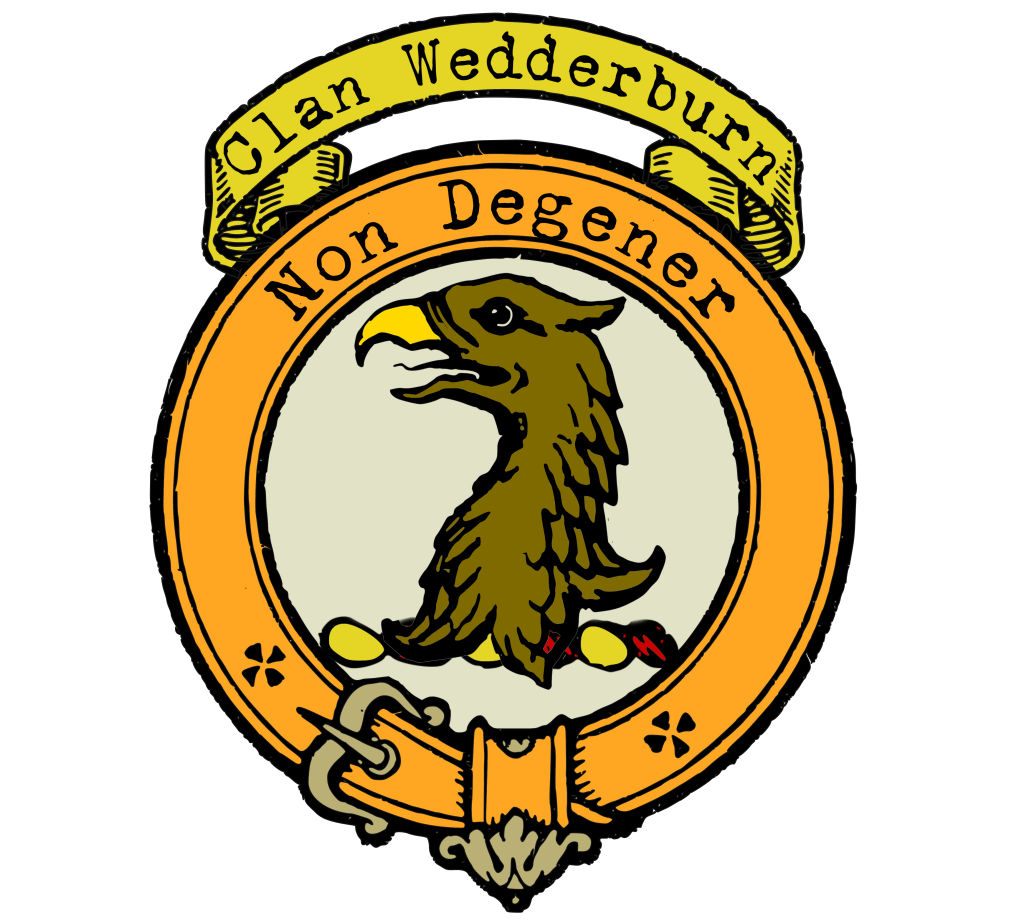Clan Wedderburn
|
|
CREST: An eagle’s head erased Proper MOTTO: Non degener TRANSLATION: Not degeneralte VARIATIONS: N/A |
| The first recorded mention of the Wedderburn name in Scotland dates back to 1296 when Wautier de Wederburn paid homage to King Edward I. Their ancestral lands, nestled in the picturesque region of Berwickshire, were a testament to their enduring connection with the Scottish landscape.
As the years rolled on, references to prominent Wedderburns such as John de Wedderburn in 1364 and William de Wedderburn between 1426 and 1452, showcased the family’s growing influence in the region. However, the Wedderburn lands eventually passed into the hands of the Home family. By the 1400s, the Wedderburn clan had branched into four closely related families, establishing themselves in Dundee and Kingennie in Forfar. It was during this period that the Wedderburns made their mark on history as devout Scottish Protestant reformers. James Wedderburn, along with his sons James, John, and Robert, played a pivotal role in the Reformation. Their collaboration resulted in the creation of the “Guide and Godlie Ballads,” also known as the Wedderburn Psalms, which became an essential part of Scottish religious literature. One of the most notable figures in the Wedderburn family’s history was James Wedderburn, who became the Bishop of Dunblane in 1636. However, his association with Archbishop Laud and efforts to introduce a new liturgy to the Church led to his exile from Scotland in 1638. He found refuge in Canterbury, where he rests today in the cathedral. As the family evolved, two of the Dundee-based Wedderburn families eventually became extinct in the direct male line. However, the legacy of Clan Wedderburn continued through other branches. The branch of Clan Wedderburn that would leave the most indelible mark on history descended from Robert Wedderburn. His grandson, Alexander, served as the clerk of Dundee from 1557 to 1582. This branch gained favor with King James VI and accompanied him to England in 1603. The king even presented them with a ring, a symbol of his appreciation. In 1708, they received a Crown charter, elevating the lands of Easter Powrie to the status of a barony, aptly named Wedderburn. This branch of the family reached the zenith of its prominence. However, fate can be capricious. The line of this branch came to an end with the death of David Wedderburn of Wedderburn in 1761. The estates passed to the Scrymgeours, who amalgamated the Wedderburn name with their own. Despite the twists and turns, Clan Wedderburn’s legacy endures. The Scrymgeour-Wedderburns, now the Earls of Dundee, hold the chiefship of the family through a family arrangement. When the Wedderburn chief ascends to the earldom, the chiefship is passed to his heir, keeping the clan’s traditions and history alive for generations to come. |
|
Citations:
|
|
Purchase @ Redbubble
Purchase @ Amazon.com
Purchase @ Amazon.co.uk

